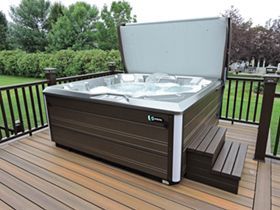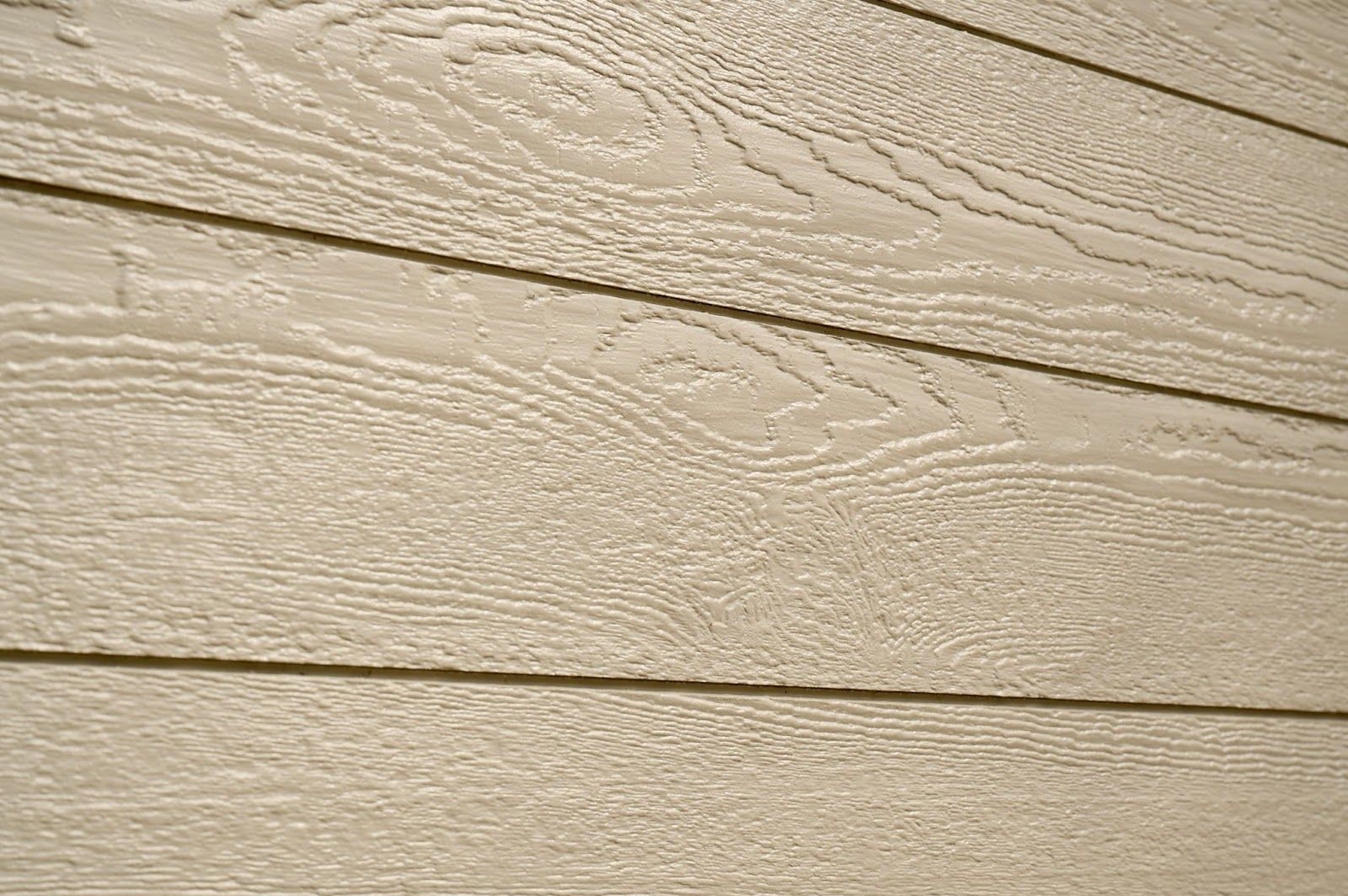How to Decide Between Treated & Composite Decking
Chances are when you look around your neighborhood, most of your neighbors have decks, and they are most likely made out of wood. There is no question that treated wood decks were the most popular option for many years, especially with the issues that came with composites when they were first introduced into the market. It’s a far easier material to work with for DIYers, it’s lighter, the appearance can be changed fairly easily, and it actually looks like real wood (because it is)!
But with all the varying lines of composite decking now stretching across nearly every price category, paired with the increased cost of wood, what is the best option today? Let’s dive into all the details and find out!
Pressure Treated Pine
The most common wood decking that we have is Treated Pine, followed by Cedar. Southern Pine trees are plentiful which is why it is cheaper and generally more accessible than Cedar to buy at various home improvement stores. For the purpose of sticking to a straightforward and basic topic, we’ll just forget about Cedar for now.
When talking about treated lumber (Pine), there are two kinds that are generally accessible, AC2 and ACQ. According to Midwest Manufacturing, AC2 is a “revolutionary way to pressure treat wood” versus an ACQ (Alkaline Copper Quaternary) also known as a CBA (Copper Azole) treatment. Both of these treatments were formed to move away from the old CCA treatment. Up until around 2004, lumber was treated with CCA (Chromated Copper Arsenate), which contained arsenic, which is a known carcinogen, and skin contact with CCA was found to increase risks of certain kinds of cancer. Today, almost all treated lumber found in stores is going to be ACQ treated lumber, and Menards lumber will certainly be AC2 treated.
AC2 is certified as an Environmentally Preferable Product, contains almost 2x more preservatives per cubic ft for Critical Members than most others (.23 pounds per cubic ft versus .15 pounds per cubic ft), carries lighter and more natural coloring, is approved for aluminum contact, and also comes with a first season water repellant. Believe it or not, there isn’t much more information to be found on AC2. There goes two hours of my day with nothing more found than a two page handout.
ACQ on the other hand is a bit easier to find information about. It is a water based treatment in which a copper compound is suspended in the lumber by vacuum pressure, and carries minimal health concerns. Right off the bat, it is not approved for contact with uncoated steel or aluminum, and actually accelerates corrosion of galvanized steel components 10x faster than CCA treatment.
What to Know with a Treated Pine Deck
Regardless of where lumber prices are, it is still likely that a treated deck will be cheaper than an entry level composite. However, the lower initial costs come with some tradeoffs down the road, including lifespan, maintenance and appearance.
Because treated lumber is a natural material, realistically expect your deck to last about 10 years, but proper maintenance (or a lack of) can cause your deck to need to be replaced much sooner, or possibly last a bit longer. Yearly maintenance is required with a treated deck, including cleaning at a minimum once a year, and I’m not talking about a quick rinse with the hose. This is a “on your hands and knees with a brush scrubbing” kind of cleaning, and while it sounds absolutely horrible, this is a commitment that comes with a treated deck.
Really where a treated deck shines is the customizability that you have with it. For the first year, your deck will need to dry out and shed the initial water repellant. After that, you will need to stain your deck, and with hundreds of stain options there is no doubt that there is something that will match everyone's style. However, due to it being a natural material as it dries and ages it may begin to shrink in size causing larger and un-uniform gaps between boards, splits at screw locations, and while generally not a problem until late in the life cycle, boards may begin to twist and bow and is definitely something that should be considered.
Well, I don’t want to have any twisted boards on my deck, can I replace them?
Yes, and it’s actually very simple due to the fasteners being individual to each board. Swapping out a deck board can be done by any homeowner with an impact driver and a saw, or a local handyman for likely less than $100. But, that individual board would then have to go through the same year long drying process that your entire deck did prior, which means a single unfinished board in your beautifully stained deck. So does that make composite better? Lets see.
Composite Decking
Trex first introduced composite decking in the 90’s, and just like most first generation products, it was far from fantastic. It mixed wood fibers with plastic then formed them into decking, however it had minimal protection and the wood grain pattern trapped moisture and debris, causing surface mold and mildew. Pair that with excessive fading and Trex found themselves with a class action lawsuit, however these issues are essentially what gave the push to make a new product in 2009 - capped composites.
Capped composite decking varies from the first generation in that it has an eco-friendly composite core, then is capped with PVC. There are some PVC deck boards that we could get into, but in a shortened version, modern composite decking combines the two to create a superior product. This is what Trex, Fiberon and TimberTech offer. From there, the other option is a capped polymer, which is what Azek offers, however this is a much more premium option, coming in at nearly two times the cost of PVC capped decking.
Trex vs. TimberTech vs. Azek - Why Pay More?
Composite decking across the board carries the same benefits over treated lumber - minimal maintenance, longer lasting, and better looking. The major differences between composites come mostly from the manufacturing process and additional benefits and features. For example, when we compare the top offering from Trex - their Transcends line to TimberTech Edge (their entry offering), we find a similar product. Both are partially capped boards, protecting only the top, a 25 Year Limited Residential Fade and Stain warranty from Trex, a 25 Year Limited Fade and Stain warranty from TimberTech. The only differences are that Trex claims that their decking is made of 95% recycled material and TimberTech claims that their decking is made of 80% recycled material.
Where the real differences come out is with the more premium products. To make this easy, we’ll just look at TimberTechs line of offerings - Edge, Pro and Azek.
Like before, Edge is the entry offering coming with a partial cap and a 25 Year Fade and Stain warranty. Moving into the Pro line, you get a fully capped board that protects the bottom of your decking, it comes with Mold Guard technology to further the moisture resistance, and a 30 Year Fade and Stain Warranty. Lastly, the top offering - Azek, a capped polymer containing no organic material, “Unbeatable Moisture Resistance” according to TimberTech, multi-width boards, a Limited Lifetime Warranty and a 50 Year Fade and Stain warranty. On top of all that, they claim that the Azek line will stay up to 30 degrees cooler than many competitors products, has a 40% better slip resistance, and a Class A Fire Rating, meaning that their Azek line is likely to minimize the spread of an active fire.
Cool, Nerdy Stuff. What About The Actual Product?
Well, composite decking will obviously last longer than a treated deck, and by the 25-50 year warranties offered, both companies obviously stand behind their products lasting at a minimum twice as long as a treated deck. Is the cost outweighing the scrub yet?
Comparing Trex to TimberTech is going to be a personal choice. Trex doesn’t call out competitors or compare them on their website, but TimberTech dedicated an entire page to it. They claim that Trex has less natural colors, unrealistic wood grain, and a plastic appearance that fails to convert those that are looking for a natural wood look to composites.
You thought that was all? Oh no.
Claims about the reason behind Trex not offering a fully capped board, exposure test results, potential limited lifespans, cost benefits, noticeable exposed wood in Trex and more. Most of it is going to be objective differences, and we believe it should be left to the homeowner to make those choices and decisions because ultimately the wood grain in a piece of plastic is a personal opinion.
The Final Choice
A treated deck is obviously the cheaper option, and is great if you are just looking to get an outdoor space, or working with a budget. It could also be a stepping stone to get to a composite product, and (assuming that the structure is built correctly) you could decide in the future to just remove the treated decking and install a composite product in place of it, cutting down on the total cost at a single point in time. Just remember that when you decide to get a treated deck, you are also deciding to do the scrubbing at least yearly, the staining, and the upkeep as it ages. Are you okay with the maintenance that comes with a lower upfront cost?
If you are investing into your forever home and want something to enjoy without hassle for many years, maybe looking into Azek makes sense. Brush it off every now and then, give it a rinse here and there and you have a deck that will look the same as the day it was installed for at least 20 years. It costs more upfront, but you save on all the scrubbing and upkeep costs.
Any decking material and line has its use and place, whether it be treated, cedar, composite or polymer, it just depends on each individual’s circumstances. At the end of the day, whether you have a treated deck, or one with Azek, you have a place to enjoy the outdoors and spend time with your family and friends, and that’s all that matters.
You don’t have to try and absorb all this information alone, give us a call and let us guide you through this process. We can answer any questions you may have about all your different options, the process of the project and anything else. Making your dreams a reality starts with a simple call.









